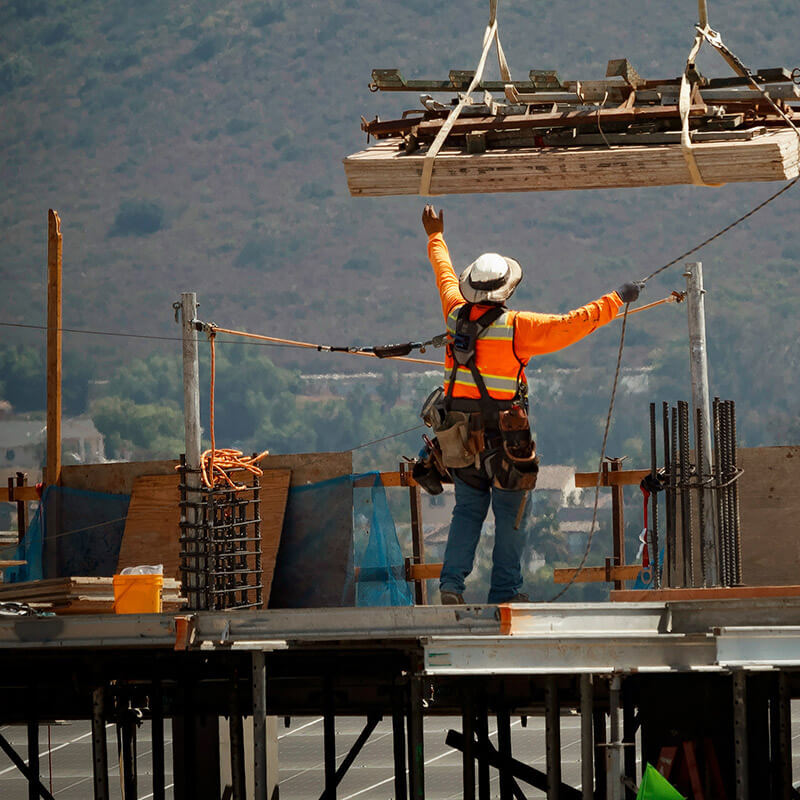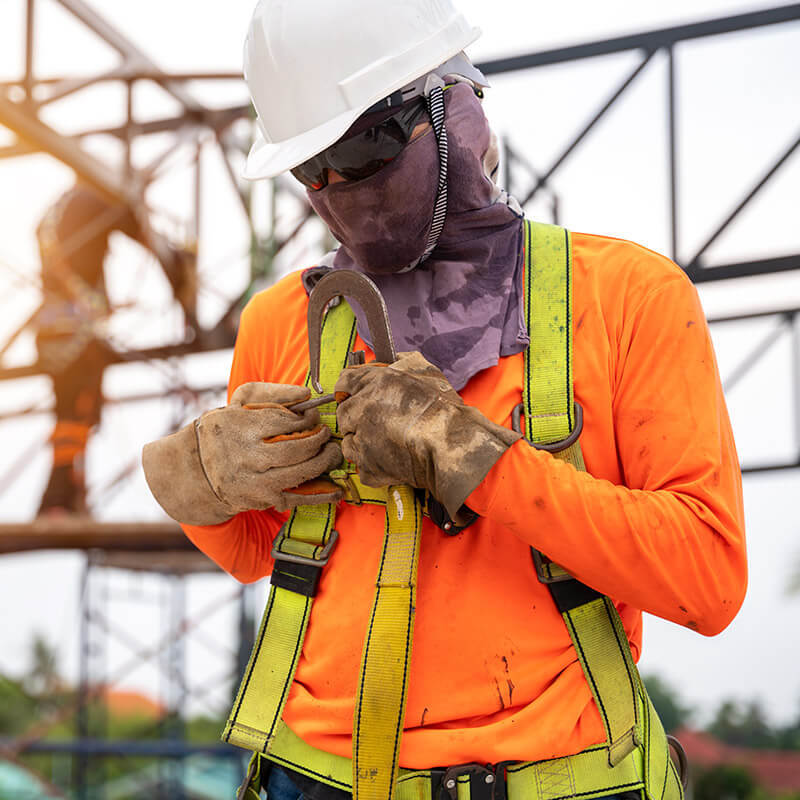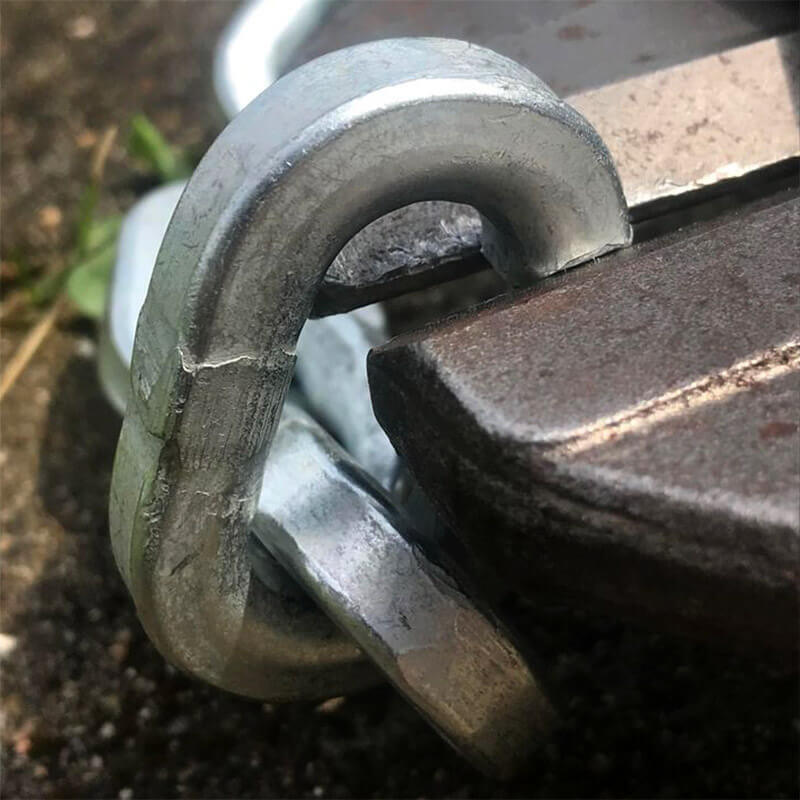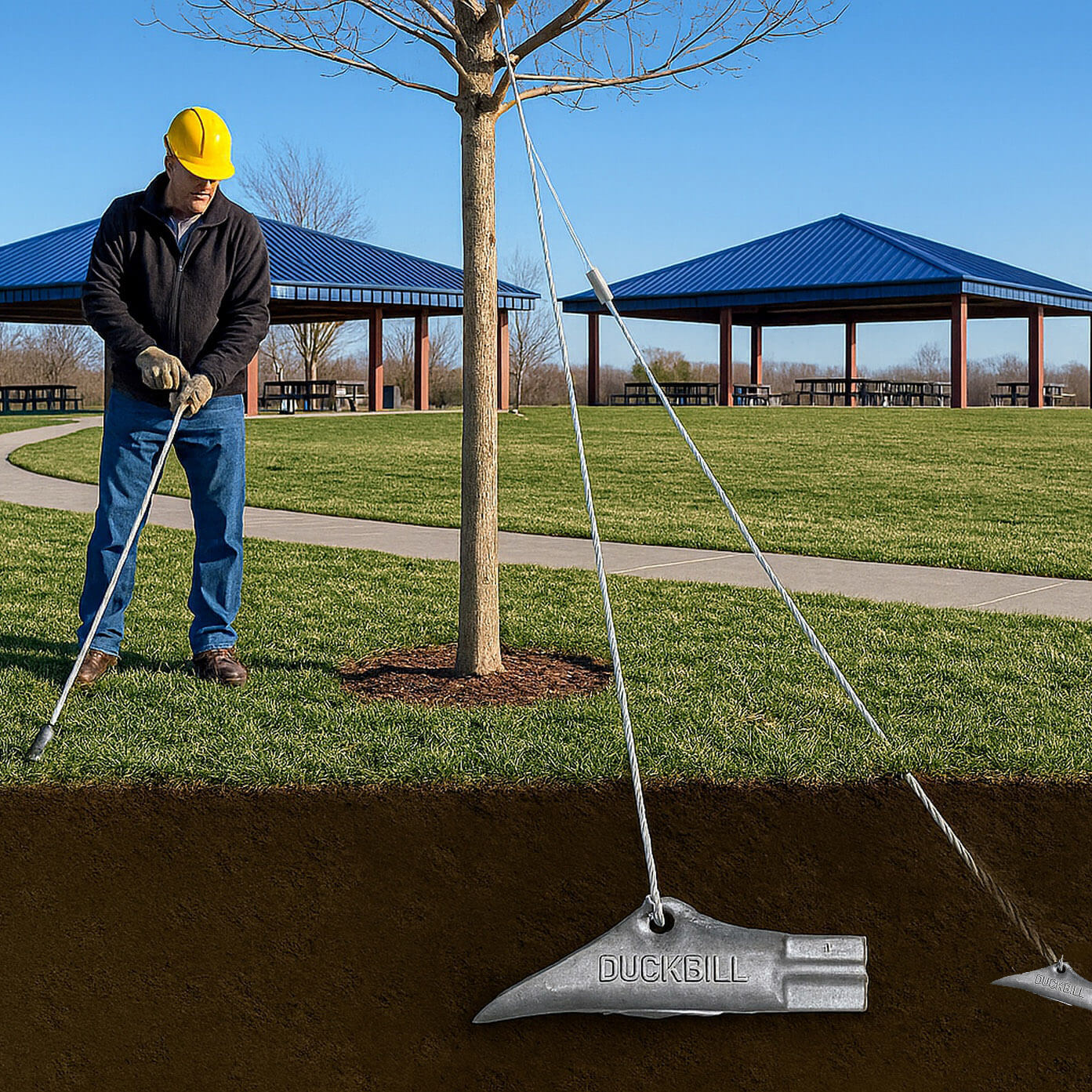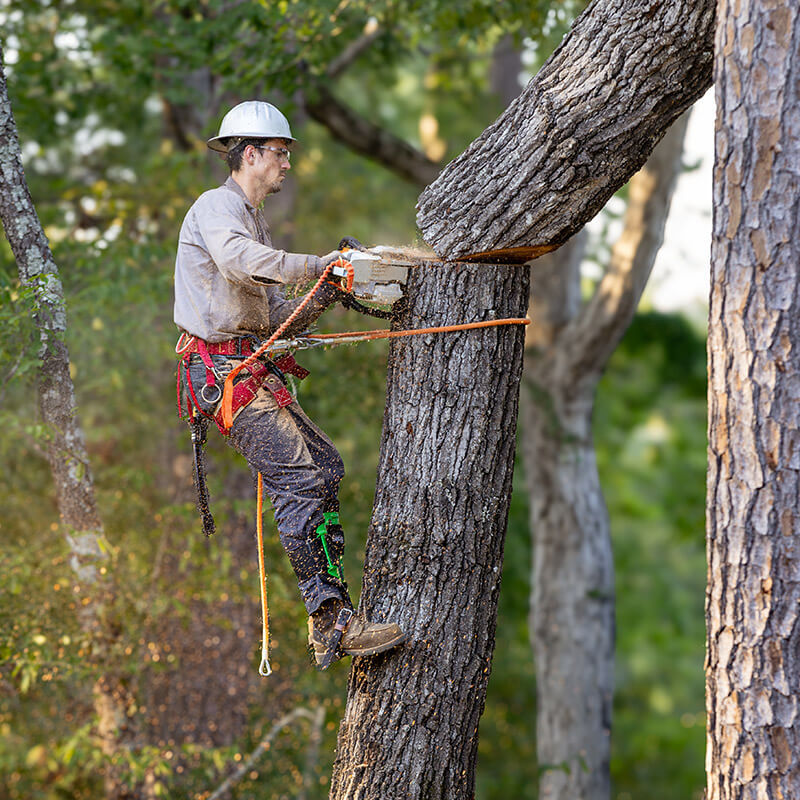What Is a Fall Protection Harness?
Falls remain one of the leading causes of serious workplace injuries and fatalities. A properly selected and fitted fall protection harness is often the last line of defense between a worker and a catastrophic incident. Understanding how harnesses work, how to choose the right one, and how they fit into a complete fall protection system is essential for safety managers, contractors, and workers at height.
What Does a Fall Protection Harness Do?
A fall protection harness is a full-body piece of personal protective equipment (PPE) designed to connect the worker to a fall arrest or fall restraint system. Its primary job is to:
- Prevent a fall when used in a restraint system that limits a worker’s movement to safe areas.
- Arrest a fall by safely stopping the worker’s descent when used with properly designed anchors and connectors.
- Distribute forces across the thighs, pelvis, chest, and shoulders to reduce the risk of injury during a fall.
Unlike older-style body belts, modern full-body harnesses are built to keep workers upright and supported, improving chances of a safe rescue and reducing the likelihood of severe injury.
Key Components of a Fall Protection Harness
While designs vary by application, most fall protection harnesses share a similar set of core components:
- D-Rings: Attachment points used to connect lanyards, self-retracting lifelines (SRLs), and other connectors. The dorsal (back) D-ring is the primary point for fall arrest. Side, front, and sternal D-rings may be included for work positioning, ladder climbing, or rescue.
- Webbing: Typically made from high-strength synthetic fibers, webbing must withstand significant loads, environmental exposure, and everyday wear while maintaining flexibility and comfort.
- Buckles and Adjusters: Located at the chest, legs, and torso to achieve a snug, secure fit. Options include quick-connect, pass-through, and tongue-buckle styles.
- Padding: Added to shoulders, back, and leg straps to help distribute pressure and improve comfort during extended wear.
- Stitching and Load Indicators: Reinforced stitching ensures structural integrity, while visual impact indicators show if the harness may have been subjected to a fall and should be removed from service.
How a Fall Protection Harness Works in a System
A harness is one part of a complete fall protection system, which typically includes:
- Anchorage: A secure point of attachment capable of supporting required loads.
- Body Support: The harness itself.
- Connectors: Lanyards, SRLs, hooks, and carabiners that link the harness to the anchorage.
- Deceleration Devices: Components like shock-absorbing lanyards or SRLs that limit fall forces on the body.
During a fall, the connector and deceleration device engage to stop the descent and limit the arresting forces. The harness then distributes those forces across the worker’s body, helping prevent concentrated stresses that could cause serious injury.
Fall Protection vs. Fall Arrest
These terms are related but not identical:
- Fall Protection: A broad term that covers all methods used to prevent or control falls, including guardrails, fall restraint systems, and fall arrest systems.
- Fall Arrest: A specific type of fall protection system designed to stop a fall in progress and minimize injury when a worker goes over an exposed edge or off a surface.
A full-body harness is central to most fall arrest systems, but can also be used in fall restraint and work positioning setups when properly configured.
Types of Fall Protection Harnesses
Choosing the right harness starts with understanding how it will be used. Common harness types include:
1. Standard / Construction Harnesses
Designed for general construction and industrial applications, these harnesses focus on durability and everyday comfort. They typically include a dorsal D-ring for fall arrest and may include additional features like quick-connect buckles and lightweight, high-visibility webbing.
2. Work Positioning Harnesses
Used by utility workers, linemen, and trades that need hands-free operation at height, these harnesses often include side D-rings at the hips. When combined with positioning lanyards, they allow workers to lean back and work with both hands while maintaining secure attachment.
3. Suspension Harnesses
Ideal for jobs that require prolonged suspension, such as window washing, painting, or rope access work. Suspension harnesses are built for comfort during extended hang time and usually integrate additional padding and specialized attachment points.
4. Climbing Harnesses
Used in tower climbing, telecom work, and some industrial rope access applications, these harnesses prioritize mobility and streamlined profiles while still meeting fall arrest requirements. They often feature multiple gear loops and front or sternal attachment points.
5. Rescue Harnesses
Rescue harnesses are designed for more complex scenarios such as confined space entry, vertical rescue, and high-angle operations. They typically include extra D-rings and structural support for lifting and lowering.
How to Choose the Right Fall Protection Harness
To select the right harness for your team, consider the following factors:
- Application: Construction, tower climbing, oil & gas, utilities, manufacturing, or specialty rescue each have different configuration needs.
- D-Ring Layout: Determine whether you need just a dorsal D-ring or additional side, front, or sternal attachment points.
- Comfort and Padding: For long shifts or repetitive work at height, padded shoulders, legs, and back support can significantly reduce fatigue.
- Adjustment Range: Harnesses should be easily adjustable to fit different body types while staying snug and secure.
- Compliance: Ensure the harness meets applicable safety standards (such as ANSI/OSHA requirements) and is appropriate for your industry and region.
Inspection, Maintenance, and Replacement
Even the best harnesses can become unsafe if they are not inspected and maintained properly. Best practices include:
- Pre-Use Inspections: Before every shift, check webbing, stitching, D-rings, buckles, and labels for signs of damage, wear, burns, cuts, fraying, or chemical exposure.
- Post-Fall Removal: Any harness involved in a fall arrest event should be removed from service immediately and replaced or inspected and cleared according to the manufacturer’s instructions.
- Cleaning: Follow manufacturer guidance, typically using mild soap and water. Avoid harsh chemicals and high heat that can damage webbing.
- Storage: Store harnesses in a clean, dry area away from direct sunlight, chemicals, and sharp objects.
Documented inspection programs and proper storage can significantly extend the usable life of your harness fleet and help maintain compliance.
Building a Complete Fall Protection System
A harness is only as effective as the system it’s connected to. To protect workers at height, pair your harnesses with appropriate anchors, connectors, and deceleration devices that meet or exceed the applicable load and performance requirements.
Shop Complete Fall Protection Systems
Looking to build or upgrade your entire fall protection setup? Explore our full range of Fall Protection Equipment at Lifting.com, including harnesses, lanyards, SRLs, anchors, and fully assembled kits from trusted brands.
Harnesses and Body Belts
Full-body harnesses are the core of most fall arrest systems, while body belts are typically used for work positioning only and should not be relied on for fall arrest. Selecting the right harness or belt helps match each worker to their task and environment.
Find the Right Harness for the Job
Compare standard, construction, climbing, and specialty harnesses in our Fall Protection Harnesses & Body Belts category. Filter by D-ring configuration, size, and brand to outfit your team with the right gear quickly.
Self-Retracting Lifelines (SRLs)
SRLs automatically extend and retract to maintain a taut lifeline, reducing free fall distance and limiting arresting forces on the body. They are ideal for many overhead tie-off applications and can significantly improve mobility and safety.
Upgrade to Self-Retracting Lifelines
Browse personal and overhead SRLs in our Self-Retracting Lifelines section. Choose from compact personal units to long-run cable SRLs designed for demanding industrial environments.
Fall Protection Kits
Pre-built kits combine harnesses with compatible lanyards, anchors, and connectors, making it easier to deploy complete systems for roofing, tower work, and general construction without guessing at individual components.
Start with Ready-to-Go Fall Protection Kits
Simplify purchasing and deployment with Fall Protection Kits that bundle harnesses, lifelines, anchors, and more into turnkey solutions for common job types.
Fall Protection Accessories
The right accessories improve comfort, safety, and efficiency. Trauma straps, lanyard extenders, tool lanyards, and additional connectors help tailor systems to your specific job site and tasks.
Dial In Your System with Accessories
Enhance worker comfort and safety with Fall Protection Accessories like trauma relief straps, tool lanyards, and specialty connectors that complete your system and address real-world challenges on the job site.
Putting It All Together
A fall protection harness is more than just a piece of gear—it’s a critical component in a carefully engineered system designed to protect lives at height. By choosing the right harness for your application, integrating it into a compliant and well-designed fall protection system, and following thorough inspection and maintenance practices, you can significantly reduce the risk of serious fall-related incidents.
Whether you’re outfitting a single worker or an entire crew, Lifting.com offers the harnesses, SRLs, kits, and accessories needed to build a safer, more productive job site.
What are the four components of a PFAS?
Nov 7th 2025
Is Palmer Safety OSHA Compliant?
Nov 3rd 2025
What’s the Hardest Chain to Cut?
Oct 20th 2025
What are the most common tools used in rigging?
Oct 13th 2025
What Is the Strongest Security Chain?
Oct 7th 2025
Are Pewag Chains Good?
Oct 3rd 2025
What Are DuckBill Anchors Used For?
Sep 26th 2025
What is a Tree Climbing Harness Called?
Sep 22nd 2025
How Long Are DBI-SALA Harnesses Good For?
Sep 16th 2025


